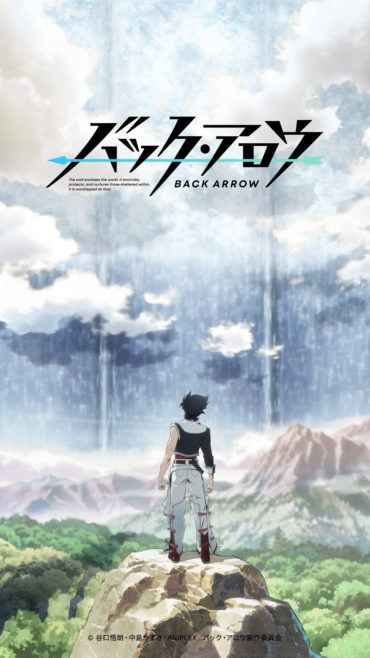Winter Overview 2021 Part 2: The Shock of the New!
As the first episodes of the Spring 2021 season start to air, the writers at Anime UK News are still busily writing about their thoughts on Winter 2021. Which new shows of the Winter 2021 season were the standouts, the must-watches? Did we abandon any of the new series that we started watching?
Demelza

When we started the Winter season I was excited about a huge variety of shows, but one I was particularly interested in was Mushoku Tensei: Jobless Reincarnation. The original light novels are known for being the pioneer of the isekai genre (although this isn’t quite true as Frog-kun explored over at ANN), and it’s certainly filled to the brim with the genre tropes we’ve come to expect from series like it. Initially I was apprehensive that the anime wouldn’t live up to all the hype, but despite everything it turned out to be a great series!
Our story follows Rudy, who has been reincarnated into a fantasy world after being run over in Japan at the age of 34. In this new world he starts over as an infant, but retains his 34-year-old mind and memories. Across the series we watch over Rudy as he grows up, learns magic and finds his path in life. Honestly it’s fairly stereotypical, but what makes it stand out for me is how well thought out the world and magic system are. It’s clear that the author has put a lot of work into planning everything out and that comes through in the writing.
The downside is that Rudy is, well, pretty terrible person most of the time. He’s constantly ogling the female cast and hoping to bed them (let’s not forget he’s a young child at this point) and even if he’s not doing that he can be quite selfish and frustrating to watch. The only reason I can let this slide is because Mushoku Tensei never tries to make us believe that Rudy is anything but the problematic character he is and I appreciate that. Because of his personality a lot of viewers will be put off the show, but I think if you can look past it there is a really interesting show here.
Another thing to watch out for is how stylistic the show is. Despite being created with modern day animation techniques, the studio overlay a grain effect in an effort to make it look like more traditional anime from years back. This is a little jarring to start with but quickly became a choice I grew fond of. All of this was also backed up by some truly wonderful animation when it came to fight scenes. The other nice thing is that Mushoku Tensei will be back for a second season later in the year, so although we’ve said goodbye to these characters for now we’ll see them again soon enough!
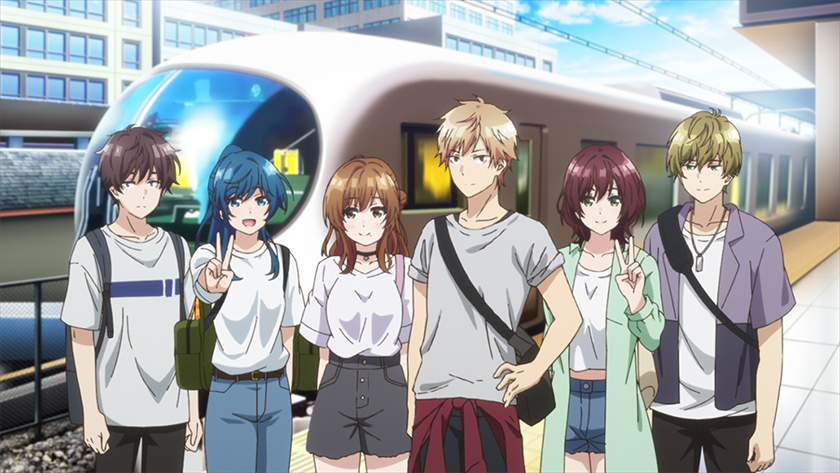
Perhaps one of the most surprising hits for me this season was Bottom-tier Character Tomozaki. Now I have quite an interesting history with this series since I once reviewed Volume 1 of the light novels and then chose to drop the series. However, after some reassurance that the series gets better I ended up picking it up and finding I really enjoyed the story after the initial book.
Our protagonist is Fumiya Tomozaki who is one of the best in Japan when it comes to competitive fighting game Atafami, but in real life he’s shy, socially awkward and an outcast at his school. One day he agrees to an ‘offline’ meeting with one of Japan’s other top Atafami players, but is shocked to discover that his rival is none other than the most popular girl at school: Aoi Hinami! Thereafter Aoi invites Tomozaki to play the game of life, in which she encourages him to come out of his shell and interact with the people and world around him.
Admittedly I didn’t think I’d enjoy the anime once it was announced to be picked up by studio Project No.9, since I have a history of not getting on with their work (I find the animation flat). This more or less ended up being true for the first four or five episodes where I found the anime was cutting certain interactions or just not standing out as anything special. Later in the series where it was dealing with more emotional material things got better and while I still prefer the books, I certainly wouldn’t mind seeing more of the anime in the future.
If you’re a fan of My Youth Romantic Comedy Is Wrong As I Expected, then this one is worth checking out since it has a very similar set-up but with more immediately likeable characters.

Of course not every series can live up to the excitement of the first few episodes and this season that happened for me with Suppose a Kid From the Last Dungeon Boonies moved to a Starter Town. Although the show got off to an entertaining start, the jokes quickly became somewhat stale – especially the fact Lloyd stays so oblivious to his abilities. I suspect the team at Liden Films were also rearranging some of the content, since some of it didn’t match up with what I’ve read of the manga and that led to a somewhat disjointed feeling.
More than that though I feel as though the series is better in the short chunks of the manga or light novel series than it was as an anime. Perhaps with a better production behind it the show could have overcome the issues it was left with, but it just wasn’t meant to be this time. If you were taken with the first few episodes and don’t mind the repetitiveness of it then it’s well worth continuing, but perhaps instead of the anime I’d encourage you to check out the manga or light novels instead.
Mushoku Tensei, Last Dungeon Boonies and Tomozaki are all available to stream on Funimation.
HWR
Heaven’s Design Team had a solid premise, which showcased how the creation of Earth’s animals and creatures came from the minds of a group of inventors. These inventors were hired by God himself, who is outsourcing the creation of Earth’s inhabitants and all creatures great and small.
I was perhaps a little concerned that this premise would run a bit thin but can gladly say that, 13 episodes later, Heaven’s Design Team kept on delivering as the series had plenty of animals and creatures to choose from.

What works nicely is how specific types of animal and creature tend to be tied to specific characters, like Meido*, whose gothic-yet-cute appearance leads to her designing various poisonous and vicious creatures, and even bizarrely a koala. Mizushima and Kanamori meanwhile butt heads over their preferences for snakes and birds – which in turn spills over into how they become natural enemies in the wild.

Heaven’s Design Team also just has a nice and fun vibe overall, offering a change of pace amongst the more hectic and adventure-driven offerings this season.
[*Crunchyroll changed the names of the inventors to those used in the original manga translation from Kodansha after a couple of episodes so Meido becomes Pluto, etc.; I understand that the Japanese characters’ names include the kanji for the planets of the solar system used in the Kodansha translation. Ed.]
Heaven’s Design Team is available to stream on Crunchyroll.
Sarah
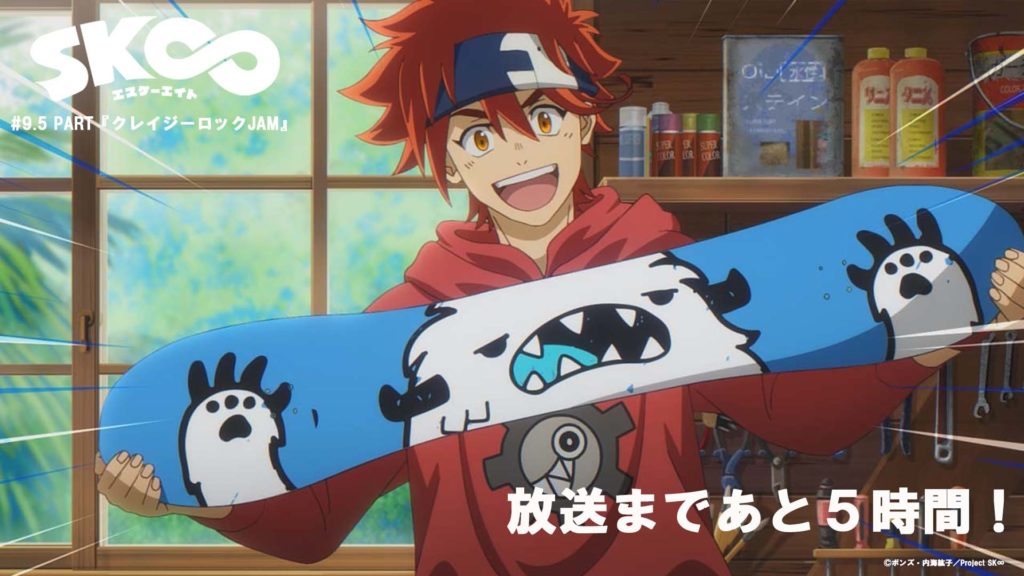
Sk8 the Infinity has been a wild, breath-taking ride. It won’t appeal to everyone, I guess, but the creative team at BONES, led by Hiroko Utsumi (director of Free, Banana Fish) have been on sparkling form, delivering the story of skateboarding obsessive Reki and his snowboarding acolyte Langa (from Canada) who turns out to be a natural and soon surpasses him. It’s peopled with larger-than-life but relatable characters and animated with a dazzling variety of styles, ranging from edge-of-the-seat outrageously crazy downhill beefs (races) to the mischievous little cartoonish clips devised as eye-catches.
The colour palette used is bright and bold, with the main characters easily identifiable by their hair colour (Reki orange, Langa silver-blue etc. ) The OP and ED are two of the best this season, the ED carrying on the sly humour of the eye-catch clips to the laid-back relaxed beat of “Infinity” by Yuri . And yet, this being Hiroko Utsumi, Sk8 the Infinity also has some meaningful things to say beneath the crazy racing and the humour, from the problems of being a child prodigy (as encountered by Miya, the sharp-tongued skate-boarding ‘catboy’) to discovering that you’re not as good at skate-boarding as you dreamed you would be (a harsh lesson Reki has to come to terms with). And then there’s Adam/Ainosuke, whose skating tag is the Matador of Love. Whenever the dramatic tones of Beethoven accompany his entrance in full gear and mask, the action shifts into another gear altogether.
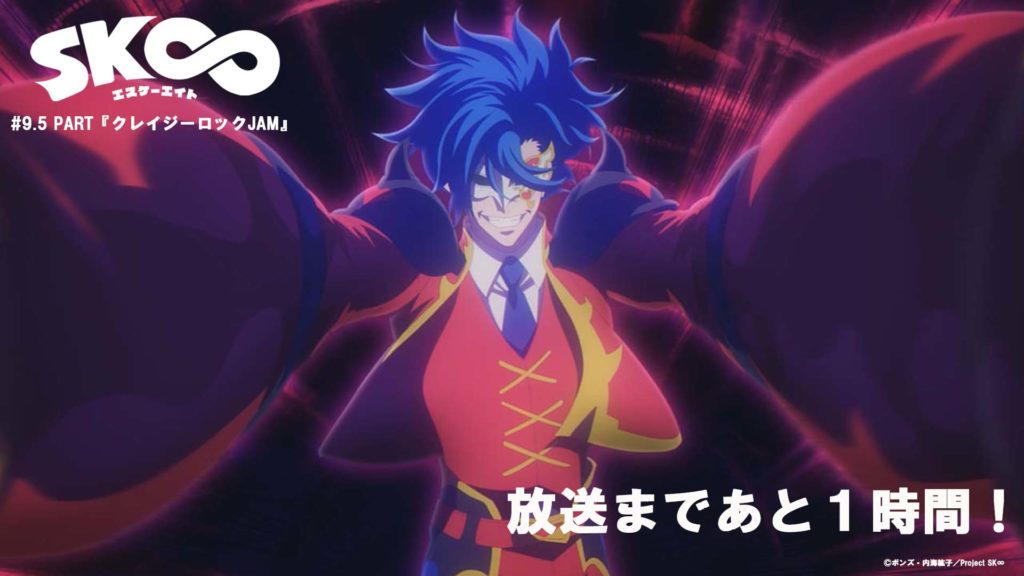
Kudos to the creative team for giving us an eye-popping finale with some of the most outré dark gothic imagery and animation I’ve seen (and appreciated) in a long time. Applause for using silence (no music, no sounds at all) at a highly significant moment. And then they delivered a satisfying ending. Unlike too many other series I could mention recently. Okay, there was one plot line that didn’t deliver but the script managed to shrug that aside in a totally blatant but cheeky twist. If you’re going to cheat, do it in style!
If skateboarding’s not for you, maybe you like anime with a supernatural flavour? I discovered not one but two (ignoring the deeply disappointing Yashahime) which caught and held my attention this season: Kemono Jihen (Funimation) and Dr. Ramune: Mysterious Disease Specialist (Crunchyroll). Both are based on manga, the former by Sho Aimoto in Jump SQ, the latter by Toro Ato currently published in digital format in English by Kodansha Manga.

Kemono Jihen tells the story of a good-hearted boy, Kabane, who is rescued from a miserable life of drudgery in a rural village by a private investigator called Inugami – even though Inugami has initially been hired by Kabane’s aunt to kill him. Whisked away to Tokyo to become part of Inugami’s detective agency, Kabane meets Shiki and Akira, two boys who have also been rescued by Inugami and are now helping him solve mysteries – and who, like Kabane, are not wholly human but part or fully yokai. Inugami himself turns out to be a shape-shifting tanuki. Kabane’s deepest desire is to find his parents who left him with a strange amulet, a life-stone.

There are other yokai around, most prominently the seductive red-haired powerful nine-tailed kitsune Inari Yoko, who wields a great deal of power (controlling the police force!) and she has her heart set on stealing Kabane’s life-stone. Add into the mix two of her younger kitsune followers, needy Kon and ambitious Nobimaru and a strong dash of supernatural horror and the results make for a compelling watch. There’s nothing cute about these yokai (well, apart from Akira, the snow-boy) or the dangers they find themselves confronting (for example, the mosquito-women running a company that quite literally sucks its employees dry). There’s also a dark theme of child (or yokai) abuse bubbling under as adults seek to use them for their supernatural powers. And there’s Mihai, an IT genius vampire working for Inugami (because what better job for a vampire in the twenty-first century?)
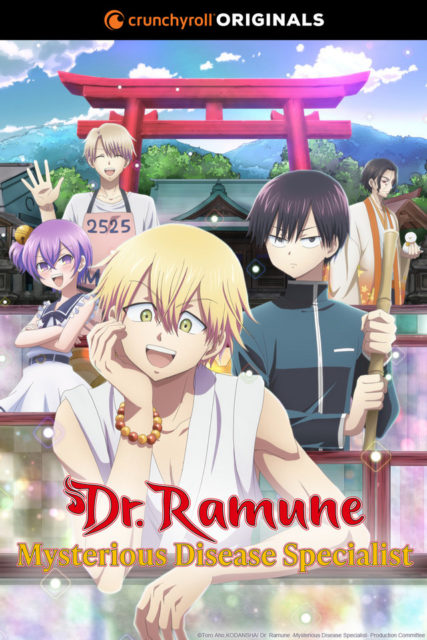
Dr. Ramune – Mysterious Disease Specialist is stranger still, but I became rather fond of the odd-couple master/assistant pair at the centre of the story. Dr. Ramune, a fair-haired young man, lives in a temple and specializes in curing the diseases that baffle the medical experts. And, weirdly, every one of the afflictions involves food: the child actress who weeps condiments; the mother whose ears are blocked by gyoza; the young man whose penis has turned into a chikuwa fishcake… Dr. Ramune is aided by a serious-minded school student, Kuro, who comes from a family of martial artists and keeps his master in check. There are other people around with unusual powers, including the proprietors of the mysterious item Akatsuki shop: blind Nico and his great-grandmother Ayame, who assumes the form of a young girl (because why not?) We learn later on that Kuro has had a hard time himself (although we’ve guessed it by then) and that he feels indebted to Ramune who, for all his eccentric ways and mysterious items, is a very skilled psychiatrist. He might use mysterious items to work out what’s troubling his patients but it’s explaining the problems and helping them to confront the difficulties or feelings in their lives that they’re suppressing that brings about the cures they desire. But is there a sadness in his own life that he’s suppressing? Who is the figure that’s keeping watch, just out of sight? The supernatural elements in this series are all original, thought up by mangaka Toro Ato, rather than based on traditional Japanese folklore and that makes a pleasant and interesting change from yet more tanuki, yuki onna and kitsune, fascinating as they can be. It helps, of course, that the talented Yuuma Uchida (Kyo in Fruits Basket, Ash in Banana Fish) is voicing Ramune and Kuro is played by Takuma Nagatsuma (Miya in Sk8 the Infinity).
Sk8 the Infinity and Kemono Jihen are streaming on Funimation; Dr. Ramune is streaming on Crunchyroll
Onosume
As I noted in our season preview, one of the big themes for this season was the comeback of idol anime, with the genre getting four brand-new shows that each give a different perspective on the lucrative industry. After sitting through them all can I say that this is a real resurgence for the genre? Well, not really, but there are some solid foundations here that build towards the true idol comeback when Love Live! Superstar!! airs later in the year.
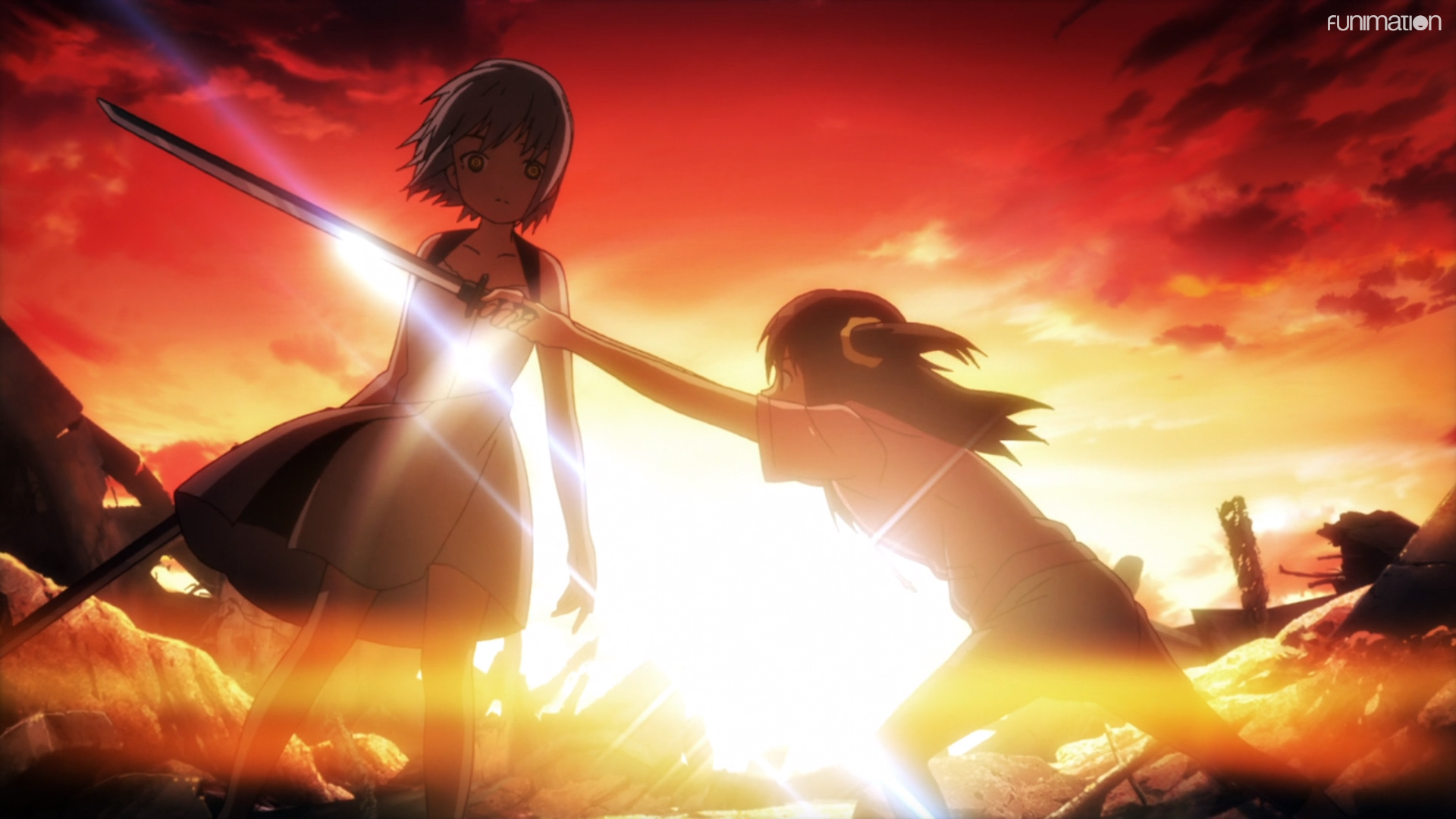
Gekidol is a show that seemed to start off well with its initial concept of combining idols and stage actresses proving to be very interesting. This is a project that spans both an anime and a theatre production (that happens to feature some of my favourite idols) and carrying the concept over into how the production is managed in real-life is doubly fascinating.
The show itself however was a big disappointment, as it felt like it was trying to throw anything and everything at the wall to try to make something stick. Its central science fiction storyline seemed to be poorly written as it spun a very convoluted and confusing narrative, while it decided to randomly dump in development for its very annoying cast of child characters purely for shock value, such as one of them being exploited and groomed into what is essentially child pornography.
This is a huge shame as at the very beginning it looked like a highly unique concept, but as time went on it just continually failed to impress and more often than not just simply annoyed me.
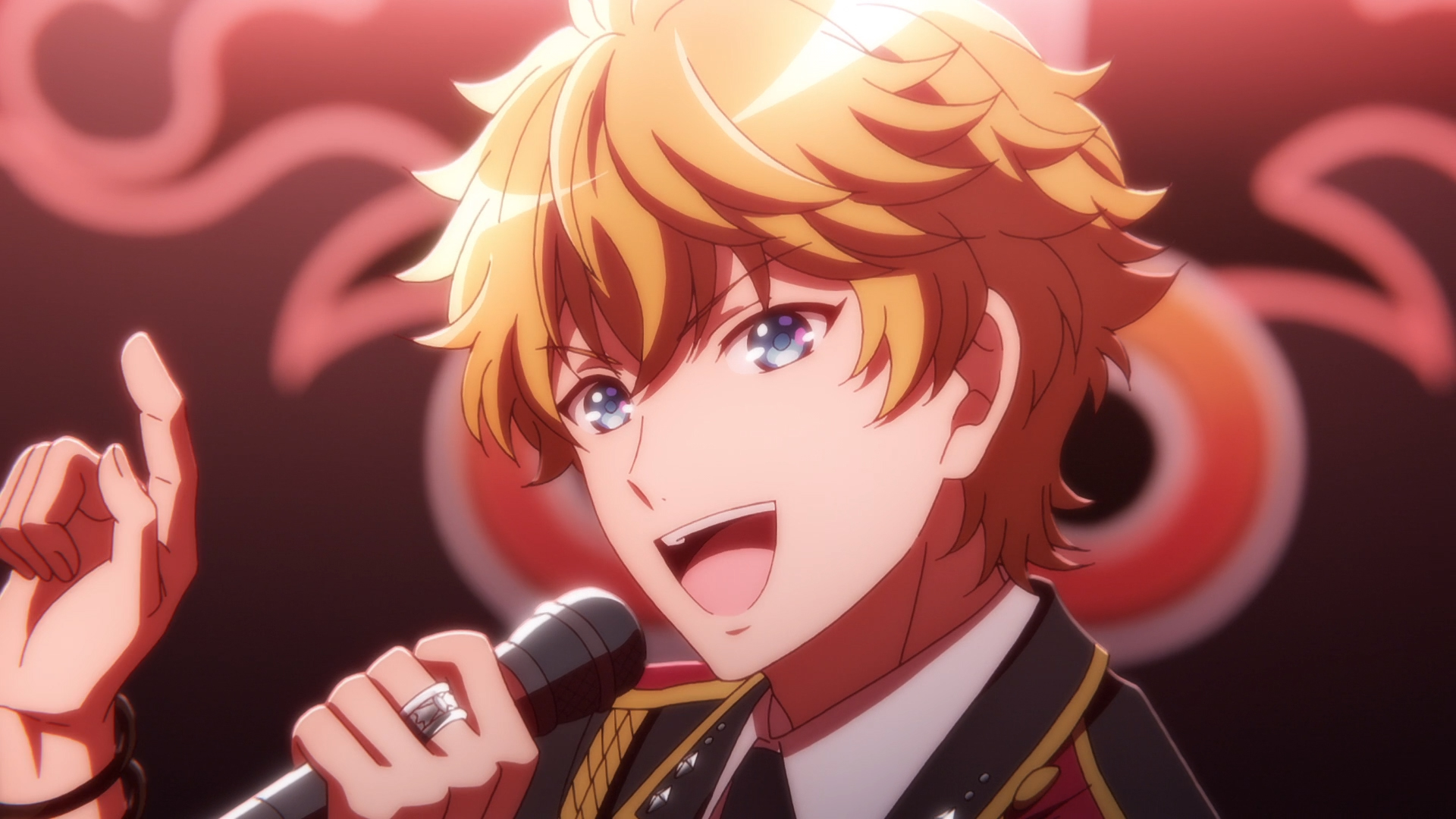
I★CHU: Halfway Through the Idol was a lot better, thankfully, but didn’t really break any new ground in the male idol genre, with its story focusing on burgeoning groups of idols who enrol at the Étoile Vio School, all looking to break out and make it big.
This show’s gimmick was its Danganronpa-like concept of the school principal being a manipulative and creepy bear creature that pushed the different idol groups into various trying situations. While these where definitely entertaining and at times pretty funny (the haunted house episode being a pretty fun adventure in particular), this type of show ultimately lives and dies on its cast of characters, and despite finding the principal utterly hilarious, I struggled to really gel with the idols themselves.
Its main fault was choosing the weakest and most bog-standard idol group of the bunch to follow, Fire Fenix, a trio I found frustrating at best and annoying at worst to follow, as their naivety and immaturity continued to drag them down. The other groups in the series (which do get development of their own) are a lot more compelling, even if some can be a little bit out there.
Ultimately, while I wasn’t expecting too much with it being based on a mobile game, this show still had some fun moments and with some fairly decent songs peppered throughout, things came together to make it a decent, if unremarkable, idol anime.
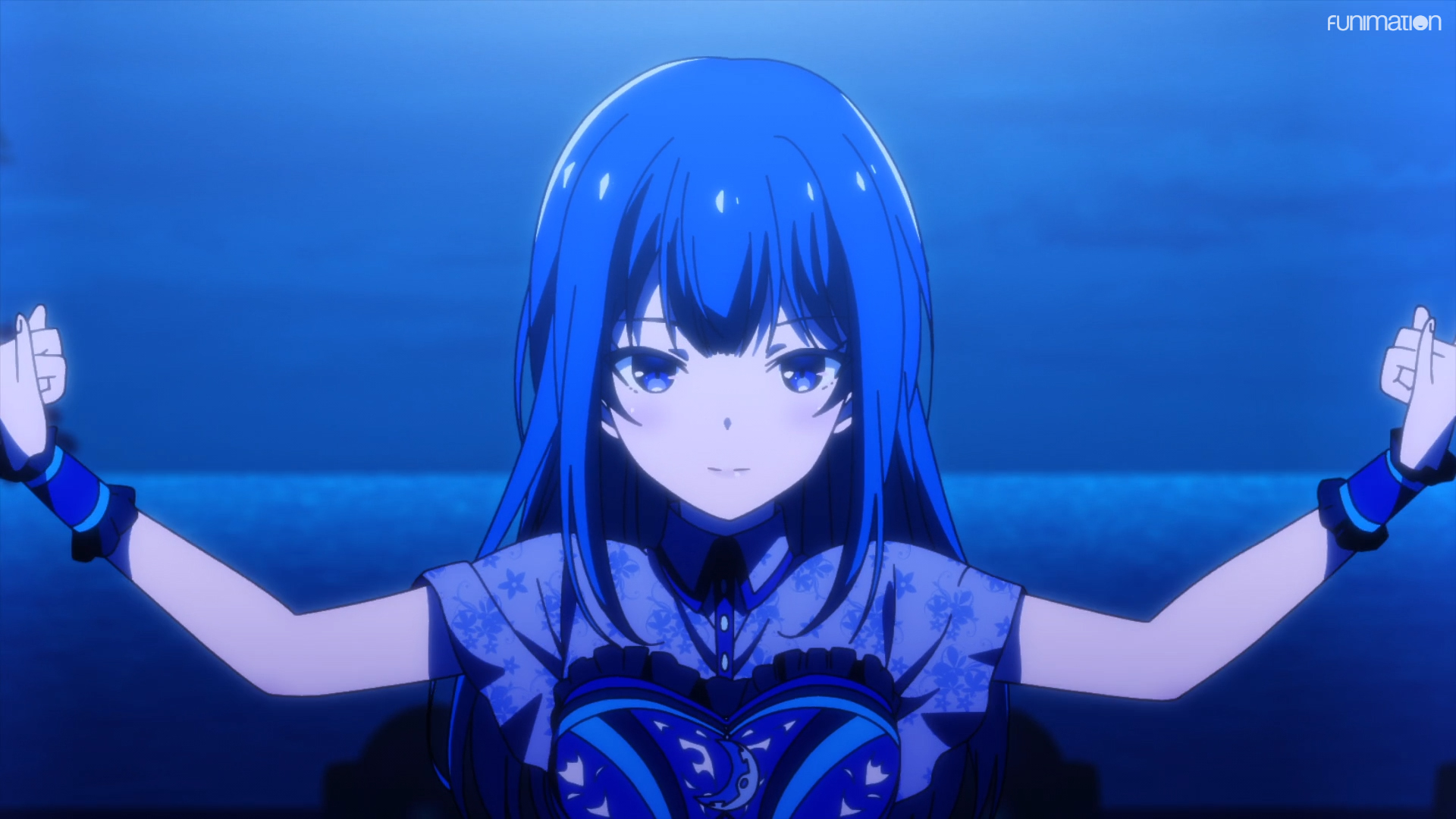
IDOLY PRIDE, on the other hand, was something else entirely, as it separated itself out from the idol genre template to create a very touching drama about loss and how people deal with it and move forward. There has been a clear trend of a split between the more traditional idol shows that focus more on the music, and those that are fundamentally dramas that are using idols as a backdrop. While I do prefer the former, I still thought this series was really good and pitched well at what it was trying to do.
The main character in this series is not one of the idols that aspire to be superstars, but their manager, Kouhei Makino, who is haunted by the ghost of his friend and the idol who he initially manages, Mana Nagase, after she passes away in a car accident on the way to the finals of the Venus Grand Prix, the competition to determine Japan’s top idol. With her dreams remaining unfinished, Mana guides Makino through the series, as he forms up a set of idols within the agency he works at, Hoshimi Productions, that he believes can take it to the top.
While that ultimately becomes a consequence, it’s not really the true point of the series, as it focuses on the three characters most touched by Mana’s death: Makino, Mana’s sister Kotono, and Sakura, a sickly girl who received Mana’s heart after her death. Each of them has significant baggage, and the series is really about their journey on overcoming their feelings and ties to Mana, which is something that the show pulls off really well, as it looks at each of those ties and delivers huge bursts of growth for each character.
I don’t think it’s quite perfect and does have a certain number of flaws, particularly in how it chucks more and more characters in early on, who in the end don’t really matter much to the overall story, however if you are looking for an idol show that takes its own path with a tender and dramatic story, then I’d highly recommend you give IDOLY PRIDE a shot.
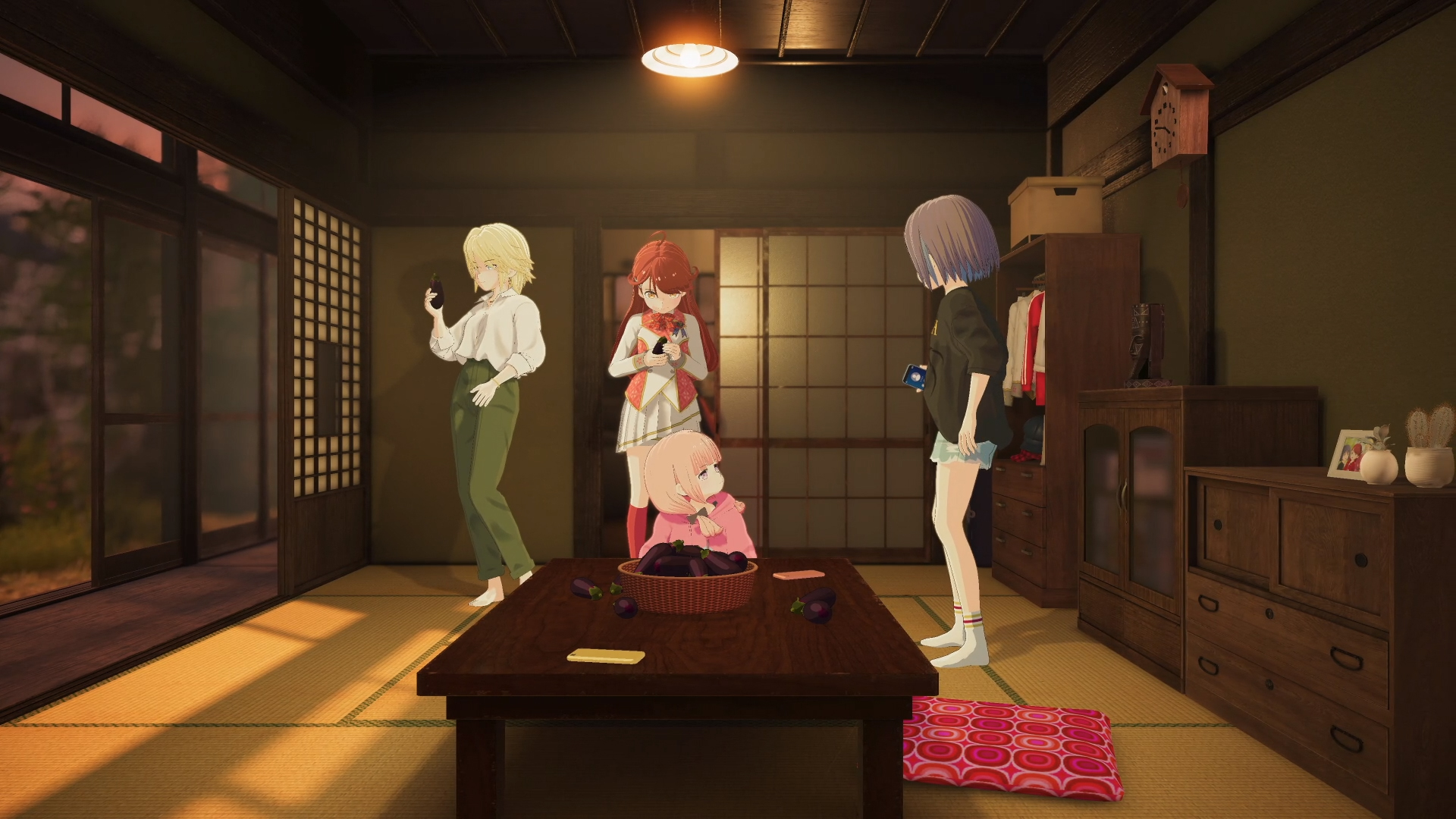
We aren’t done yet though, as I present to you the show that I surprisingly had some of the most fun with this season: Idolls!. While each episode of this series is less than 10 minutes in length, each one is barnstorming great fun despite having little budget or production values to its name. The series follows four girls who are in a relatively unknown and struggling idol group called the Idolls, with only three fans to their name. After dreaming of performing at the Budokan and deciding they want to hold a live concert, the girls accidentally book a 100-seat venue in 10 days’ time and must now sell out all of the available tickets to prevent it from being cancelled.
Honestly, something like this shouldn’t work, with each episode largely taking place in the girls’ dimly lit apartment and its rather rough motion capture CGI revealing its pitiful budget; but it somehow manages to get away with it with how on point the characters, dialogue and jokes are in taking the mickey out of the idol industry at large. Later events have them signing with a major record label as an a cappella idol group that hit each other with eggplants, which sounds utterly stupid, but reflects the lengths you have to go to in order to be successful in such a competitive industry. Admittedly it does take a couple of episodes to get used to, but when it clicks the show reveals itself to have a lot of charm and you oddly end up rooting for the girls and hoping they actually sell out their concert.
It gives me a lot of the same vibes as all of these VTubers – a bit of a wonky and nonsensical idea on the face of things, but a really charming one underneath. If you like that sort of idea, then I think there’s a high chance you may be captured by the Idoll’s charm as well.
I★CHU: Halfway Through the Idol and Idolls! are both available to stream on Crunchyroll, while Gekidol and IDOLY PRIDE are available on Funimation.
Arbalest
The Winter season has already come and gone in a blink of an eye, and it’s been a pleasant surprise how many good shows we’ve seen since the start of the year. I’ve still one or two I need to finish off but overall it’s definitely been a strong start so far for 2021. While it’s been nice to have the return of shows like Log Horizon (also I do find it’s probably been one of the weaker seasons so far), what has been the most refreshing thing to see return, is some Mecha anime. For the past couple years we’ve not really had many new Mecha IP show up. However this year we’re witnessing a bit of a resurgence of the genre coming through in every season. So what better way to kick it off than with Back Arrow.
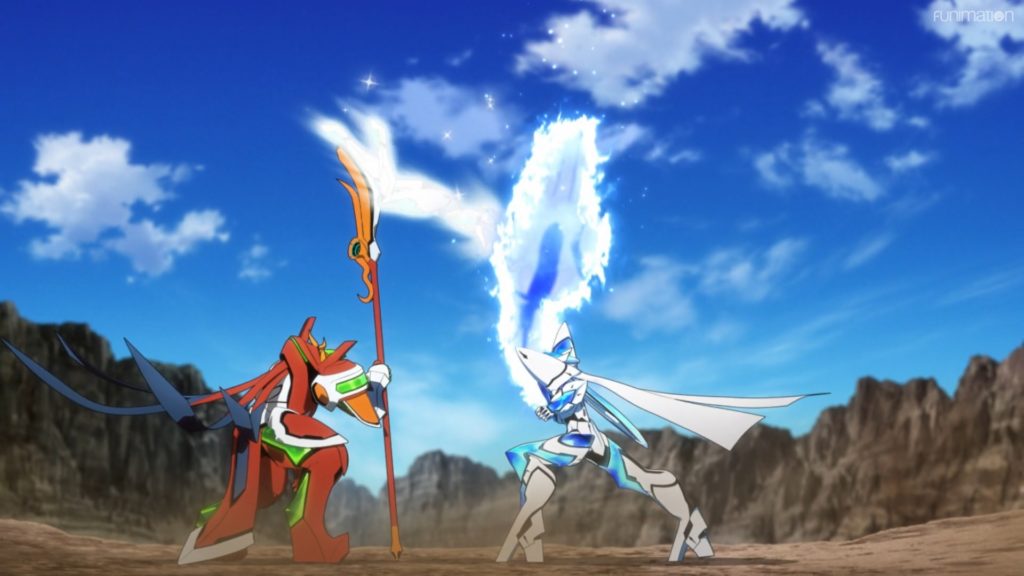
Back Arrow is produced by Studio VOLN, who have only done three other shows before now like Ushio & Tora, as well as the film I Want To Eat Your Pancreas – so still pretty new overall. It is directed though by Goro Taniguchi, whom you may know from shows like Gun x Sword and, of course, Code Geass: Lelouch of the Rebellion, and it’s safe to say that you can see a lot of those ideas and themes in there, so if you enjoyed them, guaranteed you’ll find something here to enjoy.
Back Arrow takes place in the fictional land of Lingalind, where the entire world is thought to live within a wall, and the inhabitants don’t believe that anything can exist beyond it. The world is split between two nations: The Republic of Rekka, which can only be described as very eastern in design with a focus more on a historical Chinese aesthetic, and the Empire of Lutoh, very western in comparison with castles, princesses/figureheads who are just that, with the Prime Ministers, etc running the country. Our hero, Back Arrow (it’s a Mecha show, so always expect rather bizarre character names, it comes with the genre) lands in a village in the neutral area and claims to be from beyond the wall and wants to go back, but has amnesia. While the world, and the robots in this instance are pretty new, the premise is very generic, so don’t go expecting wild ideas in that regard. What makes this show so good is its action scenes and characters. The robots here are controlled by conviction, and only if you have conviction can you form a Briheight with a Bind Warper, the ring you place on your arm to enter it. Dare I say it’s almost sentai-like with how it comes across. So each design is very fluid and built around that person’s conviction. Some are “Unrivaled” to even “I’ll manage somehow” and these all create something colourful and unique. As you’d expect, our titular hero doesn’t have a conviction, but can form a Briheight anyways.
The world has started to become a lot more interesting as we’ve slowly been introduced to both nations and the cast behind them all. The villagers who now tag along with him are interesting for the most part, however there are still one or two that infuriate me, such as the original chief of the village who is more than happy to just doom say at every opportunity. But Shu, the prime minister of Rekka, has been very mysterious as to where his actual allegiance lies and what he truly wants from the world. In some ways, he looks like he just wants to follow new and interesting things, but it’s clear he has an ulterior motive, it’s just not clear what it is. This keeps me hooked, as I want to know what is behind all these motives, who else is going to build a conviction and how that will look into Briheight form. Every time someone new is added in, the opening and ending is updated as well to include them and slowly evolves, so if you usually skip them, it’s definitely worth maybe watching them here.
This is the first TV show since Full Metal Panic! Invisible Victory that I’ve watched where the robots are all fully CG. It does start by looking a little off, but the more the show gets going, the more fluid and better flowing it feels. They’ve really done superbly with the CG animation, which I’m so happy to say, as my first thought when I saw the trailer was “it looks…lacking in detail”. But I’m glad I’ve been proven wrong. Not only that, I have a lot of interest to see how mecha with CG develops now going forward.
The show is running for two cours (at the time of writing this, we’ve just started the second half of the show) so we’ve even more excitement to come! It’s been such a fun ride I would highly recommend giving this a bash; if you enjoy robots fighting one another, you’ll definitely get something here to enjoy.
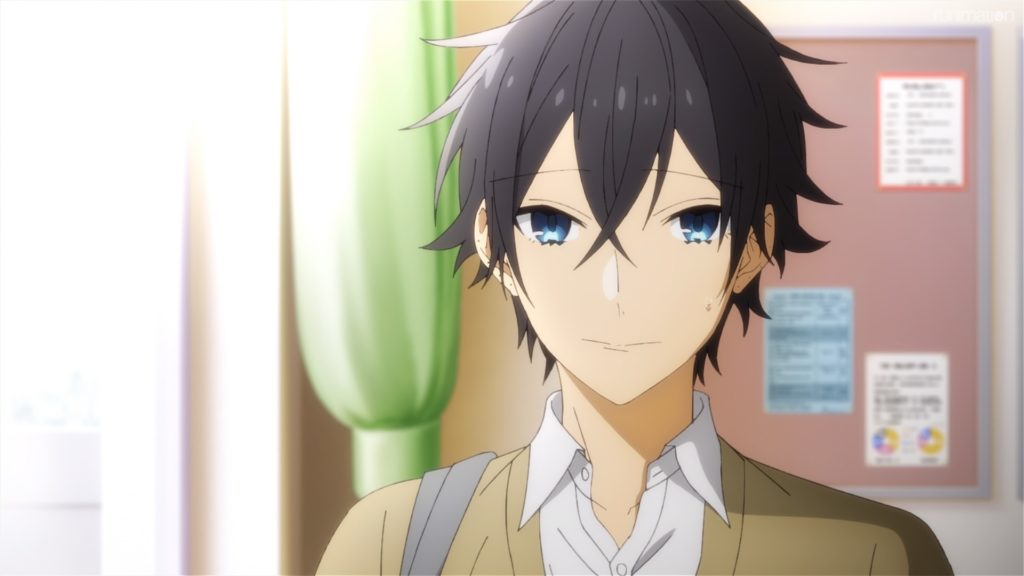
My other favourite show from the season is Horimiya which got a lot of love in our Winter preview in January. I had known about the show early on as I had been reading the manga for some time just before it started so had quite a lot of interest before going in. With the show having now ended, the big question is: did it live up to the promising start it had or did it fall short? It’s a bit of a mixed bag, honestly.
Horimiya had an extremely strong first half. Miyamura and Hori early on are a lovely couple to watch develop and come out of their shells, and we get to see that at a pace that really suits them too, but while the show is named after both, I think it’s safe to say that it’s far more a show about Miyamura, than it is about Hori. There is a lot of him you see throughout that shows his insecurities about getting close to people (thanks in part to his tattoos and piercings), and even when we’re at the end of the show, it never truly goes away as he asks a lot of “what ifs”, but he’s still a better person than he was, not isolated or alone anymore. Hori is still an interesting character, but she’s let down by some very iffy writing at points (while I won’t go into detail, there was one particular episode that did cause a lot of concern, and quite rightly, the scene in question was very poorly written and executed) and coming across as very clingy/controlling, but I do think in part, that’s due to her own insecurities as well, and not knowing how to overcome these. Thankfully Miyamura does balance this out, but I feel you can tell there are parts missing when you get further in.
Which leads me to the second half of the show. The final two episodes were really strong to conclude with, even though they could have been done in a different order. But the rest was a bit all over the place. It would have done better if the show was longer, as you start to see gaps between content, some scenes being more disjointed, and just a change in flow that doesn’t suit. It still does well with what it covers, but you really do start to feel that a two-cour series, or even just another six or so episodes would’ve done better to fill in those gaps and flesh it out further. They covered the entire manga (which is a good length, to note) in just thirteen episodes, so it was always going to happen; it’s just a shame it lost its initial promise.
Overall, I’d still recommend watching this for fans of romcom, as despite it all, I don’t think there is a single character that I disliked, and it’s still a heartwarming story to follow. So give it a watch, and I’d also recommend giving the manga a try, which is currently available through Yen Press.
Back Arrow and Horimiya are streaming on Funimation.


